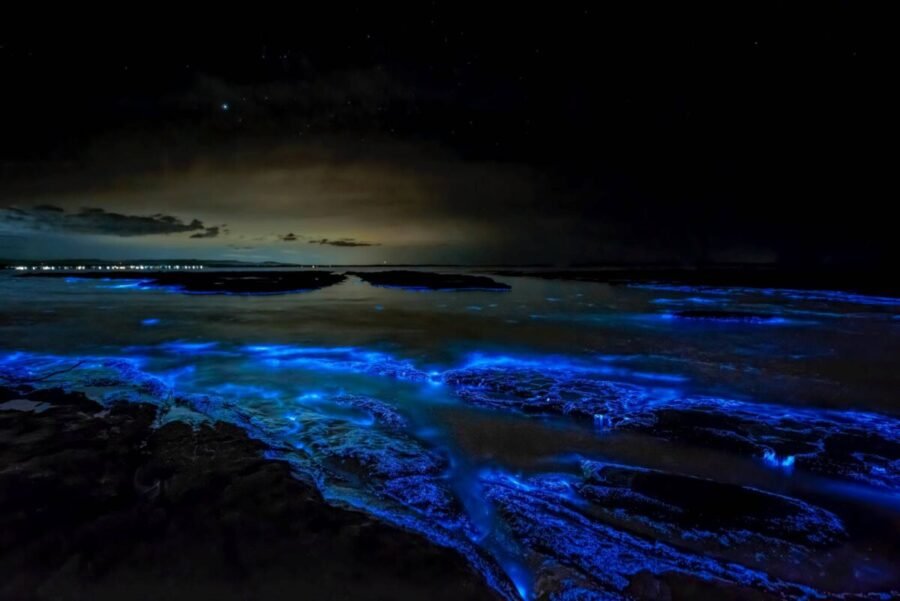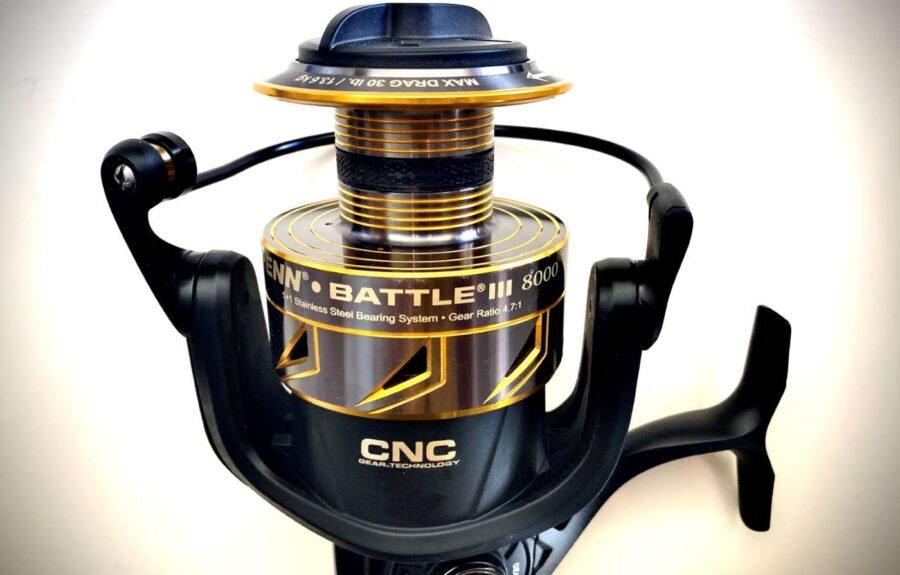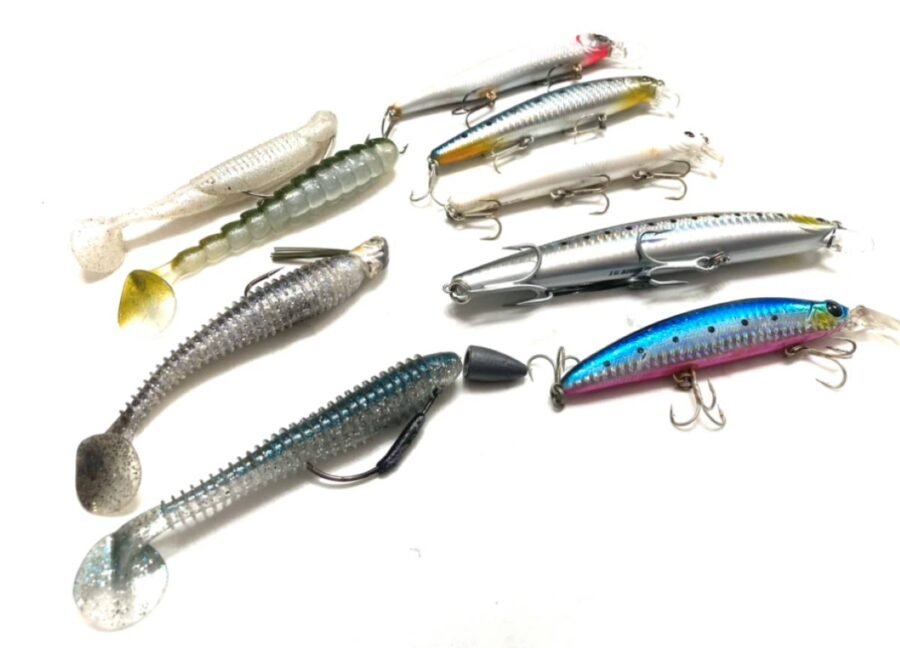Red Tide Arrives In So Cal: What? Where? How Bad?

Red Tide Tracker Article Table of Contents
- Latest News On The Red Tide
- How Long Could It Last?
- Which Beaches Are Affected?
- Red Tides In So Cal
- What Is A Red Tide?
- Are Red Tides Bad For You?
- Are Red Tides Bad For Fishing?
- Should You Eat Fish During A Red Tide?
- Why Do Waves Glow?
- When Do Red Tides Happen And Why?
Most Recent Red Tide In San Diego
The most recent red tide in Southern California began by mostly affecting San Diego County, but now is affecting Orange County and certain parts of LA County. It was reported offshore in May of 2024 and has remained and even grown in severity over the past month.
Reports of the red tide have been made as far south as Imperial Beach and as far north as LA County.
The likely cause for the current red tide is the natural increase in water temperatures with the spring season. Spring often brings along some red tide and often kelp building on our shorelines coincides with this as it all has to do with warming water temps.
How Long Will It Last?
There’s no way of knowing how long the red tide will last, but a typical red tide for Southern California lasts between 1 and 2 weeks.
The current red tide has now been around for over 6 weeks and is proving to be the most severe since 2020. The red tide in 2020 lasted some 7 weeks and was extremely dense.
Look for sea foam to develop along the shoreline as a sign that the algae/phytoplankton are dying off and that the red tide is coming to an end. – Regarding this note, I have begun to see seafoam develop at certain San Diego beaches so the light at the end of the tunnel appears to be nearing. However, certain beaches also look worse than they did just a week ago still.
Which Beaches Are Affected?
Most beaches from San Diego through Orange County are affected at least somewhat. Glowing waves, however haven’t been as easy to come by. It seems the algae associated with the current red tide aren’t as “glow-prone” as someother in recent years.
Although I have seen photos and reports of glowing waves, I haven’t seen any bioluminescence in person this year despite being present at affected beaches far past last light.
I want to thank everyone for being so active on the comments of this article as they updates are quite helpful to the so cal surf angling community. Feel free to continue to use the comments for updating areas and beaches as time goes on.
San Diego County Red Tide
Most San Diego beaches right now are impacted offshore and onshore. Bioluminescence, however has been lacking visibility.
Orange County Red Tide
Most Orange County beaches right now are impacted offshore and onshore. Bioluminescence, however has been lacking visibility.
LA County Red Tide
LA seems to be a bit spotty. It isn’t nearly as dense compared to SD and even Orange County, but the worst is certainly SD.
Ventura County
No reports of red tide in Ventura County.
Santa Barbara County
No reports of red tide in Santa Barbara County.
Red Tide in Southern California
On average, a typical red tide in Southern California lasts only 1-2 weeks and the concentration is usually minimal. Sometimes, it remains offshore and dies off before it can even reach the crashing waves in high density.
The red tide that took place in 2020 was one of the longest-lasting and densest red tides San Diego has ever experienced.
While much of the general population is attracted to this phenomenon, the red tides like the one we experienced in 2020 can be harmful to both sea animals as well as humans.
What Is A Red Tide?
You’ve likely heard about or seen some of the spectacular events like glowing waves and even glowing dolphins! It really is a spectacular sight to see, but what is a red tide?
A red tide is caused by an excessive amount of phytoplankton in high concentrations within the ocean waters (1). Commonly referred to as a “bloom”, this phenomenon takes place all around the world with California just being one of many places. Phytoplankton (single-celled) are technically classified as a type of algae. So when you hear the term “algae bloom”, this is why (2).
The red tides that Southern California typically experiences are caused by a specific type of phytoplankton called Lingulodinium polyedra also referred to as L. Poly. L. Poly is the usual offender when it comes to determining the root of an algae bloom on the west coast.
Are Red Tides Bad For You?
Before you get too freaked out, it’s worth mentioning that the red tides that occur in Southern California usually don’t pose a significant direct threat to the marine ecosystem and pose minimal threat to human health in the event of consumption.
But, it certainly can. In places like Florida, red tides have the potential to wipe out thousands and thousands of marine animals. Luckily, Southern California usually isn’t at any such risk.
It’s important to note that L. Poly can produce yessotoxin which can build up in crustaceans causing health risks all around (3). A basic understanding of the danger is the concept of sand crabs as a food source for common surf species.
Phytoplakton are the basic food source for the animals of the sea. As we move up the food chain from plankton, to sand crabs, fish, and eventually to birds of prey and even humans.
Are Red Tides Bad For Fishing?
Since red tides can be toxic, they’re generally not “good” for fishing. Although, in low density and short durations, red tides can signal warming waters in the spring time which is good for the summertime season. Prolonged and dense red tides can push fish out of areas and even kill them.
Should You Eat Fish During a Red Tide?
Technically, the red tied affects only the internal organs and blood contents so if you gut a fish properly, your fish should be safe to consume.
But, if you accidentally cut into an organ or you get blood or other fish guts/fluid in your meat, it may not be safe to consume. As a rule of thumb, I generally don’t keep any fish during red tides and after heavy rains (due to sewer run-off).
Why Do The Waves Glow?
Perhaps the most mysterious aspect of the red tide, “why do the waves glow?” can be answered in very simple terms. The answer is bioluminescence. More specifically, bioluminescence upon agitation.
These specific phytoplankton produce bioluminescent light when they are so called “agitated”. Meaning that when a wave crashes, or a fish or dolphin breaks the surface of the water, the phytoplankton are thrown about and will produce their “glow” causing the waves to appear as so.
Depending at which beach or bay you find yourself, you may even be able to see your footprints begin to glow. This will be determined by how close the phytoplankton have come to shore.
When Do Red Tides Occur?
The “when” and the “why” are closely related (at least for the reason it occurs on the West Coast). The phytoplankton, L. Poly thrives upon the transition to warmer waters, as is the case with many different types of algae. The 2020 red tide occurred just after our water temps rose by 2-3 degrees in a very short period of time.
Given this information, brief red tides in So Cal can be seen as a good sign for surf anglers. It shows that the waters are warming and that peak season surf fishing is just around the corner. Usually, as the waters warm, species like the California corbina, spotfin croaker, leopard shark, and other common species begin to repopulate the shallows along Southern California’s beaches.
References
(1) Langlois, G. (n.d.). Red Tides in California. Retrieved from https://caseagrant.ucsd.edu/extension-outreach/facts-and-resources/red-tides-in-california
(2) Fondriest Environmental, Inc. “Algae, Phytoplankton and Chlorophyll.” Fundamentals of Environmental Measurements. 22 Oct. 2014. Web. < https://www.fondriest.com/environmental-measurements/parameters/water-quality/algae-phytoplankton-and-chlorophyll>.
(3) Paz, B., Daranas, A. H., Norte, M., Riobó, P., Franco, J. M., & Fernández, J. J. (2008, May 7). Yessotoxins, a group of marine polyether toxins: an overview. Retrieved from https://www.ncbi.nlm.nih.gov/pmc/articles/PMC2525482/



Great content, keep it up!
Thank you! Just trying to spread the knowledge.
We have had a bad red tide since middle of April in Ventura County and all the way to Rincon as of yesterday
🤭
Brutal! Thanks for posting.
Good to see you on the beach this weekend Nick, hope you guys had some luck! As always, thanks for the content!!
Right back at you, Joel! I’m sure I’ll be seeing more of you this summer.
Thank you, Nick! The red tide is clearing here in the South Bay as of Friday, and we’ve managed to catch a few fish in the last couple of days, though it’s still slow. Below average water temps aren’t helping either. We’ll keep trying!
That’s fantastic to hear! All this wind is causing constant upwelling (IMO) and I think that’s lead to the lower water temps.
Nick, hope to see you on the sand soon. It has been a long winter, fingers crossed this warming trend continues!
Great write up. I always get sick when surfing the red tides so I stay clear now. Maybe the fish feel the same way?
It definitely isn’t good for them. Enough will certainly make them feel not right and even kill them after a point.
Its THICK at Fletcher Cove and del mar
Thanks for the update! Hoping it goes away soon.
How is it looking at Bolsa Chica Beach? Anyone know?
We swam at La Jolla shores May/15/24 it was real nasty! Brown visibility about 3 feet.
Yah. It does look like the red tide is dissipating IMO however. So that’s good news.
I didn’t see any foam on the beach yet, so it may take a while before it is over.
Thank you, for putting together so much great information!!!
There was red tide in the water at Blacks Beach Saturday 5/18, and yesterday at San Onofre 5/21. Gracias caballero – great article.
We fished Marina Del Rey in our boat the last two weeks, the water is terrible. The fishing has been really slow also, can’t wait for this to clear up. Thanks for the info Nick
Fished long beach surf this morning and saw the red bloom in the water. Good to know that we should stay away. Plus fishing might not be very good during these blooms.
I was at first point @ Surfrider in Malibu Friday 5/31 and the water was rusty red, enough to get me to turn around and go home. I had just been out surfing on Wednesday and it was crystal clear. The lifeguard said it broke shore the night before but up north @ Zuma it was still clear
Interesting, it is almost gone (or totally gone) at Blacks beach in San Diego. Wonder if the bloom is moving south to north.
Definitely some red tide in Orange County. Bolsa Chica State Beach has it.
La Jolla was OK yesterday but red today
Yes seems blacks was similar. Yuck today.
Torrey Pines was clean Saturday June 8th
Blacks was yuck again Sunday June 9th
I’m on vacation in Oceanside right now for three weeks, haven’t seen any foam on the beaches but I’ll keep you updated.
How the red tide? Murky red/brown water?
Is Torrey Pines clean today today June 9th? I read above that blacks was bad today.
Blacks was bad but TP was clean yesterday (intel from a friend). It’s crazy how it can be clean just a few miles down but it’s off and on along the coast. Sometimes it rolls out off shore and then comes right back in the next day but I have good intel that TP was clean yesterday.
Today (Sunday) June 10th Oceanside water looks like bean dip. Got real bad over night. This soup of misery WILL make you I’ll. My last battle lasted two months.
Brutal
Hi Nick, thank you for all of the information on the red tide. We have our boat in Shorline marina in Long Beach, Ca currently 6/9/24 we have a very dense red tide. We do have some sea foam in the surface so let’s hope that is the indicator that is going to end soon.
Thanks for the update!
Moonlight Beach in Encinitas was nasty Saturday 6/9 but yesterday was a stunning turn around to a nice blue. I have lived here almost thirty years and I can tell you the sand dredging/ replenishing have always cause massive red tides. It’s the dirty little secret of this event. The water temps were in the low (61-62) range and that will never normally cause a bloom.
That’s a very interesting idea. I’d have to look into that but could see it may have an effect.
Terramar in Carlsbad seems to be clearing. Thin strip of red tide remains offshore.
Carlsbad Campground looks to be clearing as well. Little bit offshore but surf looks more green/blue/brown than it has (red/brown).
Pontos is a bit more tinged than south Carlsbad and Terramar.
Beacons in Encinitas is patchy. Southside was a sweet light blue when I stopped by but north side had patches of red tide.
Swamis looks much improved! Mostly blue water!
San elijo looks great! Clean blue water. A bit of red tide offshore but mostly clean.
Cardiff beach is a clear blue today. Don’t even see any red tide offshore.
Solana beach is clean as well. No signs of red tide.
Del Mar is mixed. Some brown water but still lots of blue
Torrey pines is clean. No res tide other than a bit offshore and a glimpse of it south but still looks offshore. Headed to blacks to check
Blacks is far improved. A bit of brown water but much bluer than last week.
PSA: I surfed near Terramar on 6/9 when water looked like root beer and visibility was < 3 feet. This resulted in some immediate and somewhat severe allergic reactions: eyes became very itchy + red, sneezed several times while in the ocean, and my sinuses were clogged for 3-4 days. Hopefully this doesn’t happen anyone else, but take caution. I remembered, after surfing of course, that the same thing happened to me in 2020 when red tide was everywhere. Stay safe!
Dense red tide at Gaviota in SB County this week.